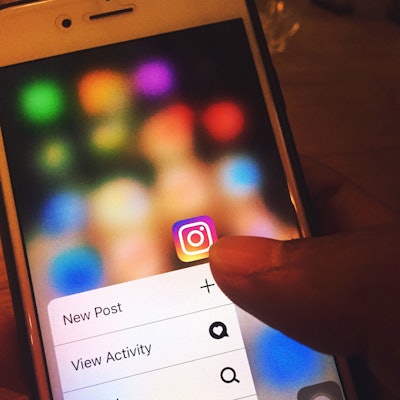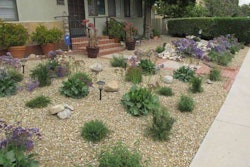 Photo: Pexels
Photo: PexelsThis post is the second of a multipart series on social media marketing.
In our last post, we went over the mentality you must have as a business owner, to succeed at social media marketing. We established that you cannot focus on direct sales, but rather creating long-term relationships with your audience members is the goal. By doing so, that can lead to referrals, retention, and word of mouth.
In this article, we’ll go over the various social media platforms including which audience they serve, the pros and cons of each, what type of content gets shared, and how lawn and landscape businesses can best leverage the platform.
Audience: Nearly everyone. Over a billion people use Facebook, including 68 percent of all Americans.
Pros: Most of your customers and target audience are already on Facebook, and it’s by far the most universal platform. Additionally, Facebook has been building out features specifically for local businesses.
Cons: Organic reach – meaning the number of people who see your posts (without you paying) has declined rapidly over the years. Since so many people use Facebook, their algorithms decide which posts your audience sees. In order to get your posts seen, you have to make sure the posts get high engagement (lots of clicks, likes, and shares), allowing the algorithms show the post to more people.
Types of content shared: On Facebook, you can share pretty much anything. Photos, short form posts, long form posts, videos, links to your blog, and even live stream videos.
How lawn and landscape companies can use it: If you’re going to focus on one social platform, it’s probably going to be Facebook. Start off by filling out your profile completely, including all business information and using high quality photographs. Your target objective should be building a relationship with current and past customers, rather than attempting to find new ones.
The great thing about Facebook is that you can share pretty much anything – photos of your work, links to your company’s blog posts, how-to videos, and even live streams. This makes it easy to consistently produce content for your audience to see.
Further Reading: Top 25 Facebook Marketing Tips for Small Businesses
Audience: 21 percent of U.S. adults; skews younger and highly educated.
Pros: Twitter is widely used to share things publicly. Meaning that since a large number of profiles are public you can easily reach out to people you don’t know and join conversations. Additionally, you can search for keywords and people in certain locations so that you’re interacting within your local business’ area.
Cons: The platform has become extremely noisy, and like Facebook, is starting to filter posts that do not get high engagement. Additionally, it’s largely an entertainment and information-focused platform, with no features built specifically for local businesses.
Types of content shared: Twitter allows you to share different types of media, but the platform is designed for sharing short, 280 character thoughts, along with photos, videos and links to offsite content.
How lawn and landscape companies can use it: With Twitter growing in popularity, you can’t simply “like” a ton of posts in your area and grow a following the way you used to be able to. Rather, you need to engage in existing dialogue related to your industry or local area, you might even get noticed by some potential clients. You can’t fake your way into conversation; you need to be genuinely adding value in 280 characters or less.
Additionally, Twitter is a great way to engage with other local businesses that you might be able to partner with or learn from.
Further Reading: Twitter Marketing: The Complete Guide to Your Content Strategy
Audience: 26 percent of all adults; predominantly female.
Pros: Similar to Twitter, Pinterest is used to share things publicly and make them searchable, so you can engage with different audiences. A lot of people on Pinterest are searching for lawn and landscape related content, with the option to share other user’s content.
Cons: To build your own brand, you’ll need to produce your own content, and the audience of Pinterest has high standards, so it can be expensive to actually produce the content.
Types of content shared: Pinterest is largely focused around projects, recipes, how-to guides, and the like. The one thing all successful Pinterest posts have in common is that they are visually appealing. If you share a blog post of your own, it needs to have a stunning image to go with it.
How lawn and landscape companies can use it: Pinterest is a great place for landscapers to show off high quality pictures of their work. With the option to comment and interact with other members, you can reach new or different audience. Commercially oriented content doesn’t do too well on this platform. The best way to gain an audience on Pinterest is to write a blog post detailing the evolution of a project or how to do it. Sure, you’re looking to provide a service not necessarily share secrets on how-to-DIY, but since the content is relevant enough from an expert like yourself, you might get someone asking you to do that same project for them if you stick at it long enough.
Further Reading: The Power of Pinterest for Small Business
Audience: 28 percent of all adults; skews towards younger adults.
Pros: Like the two previous platforms, Instagram is mostly used to share things publicly, so you can use it to get in touch with a brand new audience. The platform is young enough to where simply liking, commenting, and following people will get you follow-backs (people who follow you back), though that won’t last long.
Cons: Instagram makes it very difficult for you to take your audience off your platform. The only offsite link placement Instagram allows for you is in your profile. Currently, there is no good way to schedule posts in advance.
Types of content shared: Mostly photos and occasionally short videos. High quality photos, usually enhanced with the platforms filter features, make for great engagement. Funny memes and inspirational images also tend to do well.
How lawn and landscape companies can use it: Instagram allows you to build a new following and engage current customers. If you have your current customers in your phone, you can easily follow them by importing your contacts into the platform.
The key problem with Instagram for landscaping businesses is that it’s a platform for perusing. People just want to see pretty photos and interact with their friends. Rarely are people in the mindset of looking for information.
One way to use Instagram to spread your brand is to incentivize your customers to take pictures of their lawns, tagging your account and using a hashtag, and rewarding the ‘lawn of the month’ winner.
Further Reading: A Detailed Instagram Marketing Guide: Including Software and Secrets
Audience: 25 percent of U.S. adults; skews towards high-income users.
Pros: LinkedIn allows you to reach brand new people and maintain a professional online presence.
Cons: The platform is designed more for the corporate world than small businesses, and doesn’t have a whole lot of use for consumer facing businesses.
Types of content shared: Most users don’t share anything, but those who do typically share professional articles.
How lawn and landscape companies can use it: LinkedIn is a must-have for commercial landscaping companies. LinkedIn makes navigating an organization and finding the appropriate contact at an organization incredibly easy. It allows you to see the connections you have in common, making it more convenient to connect with them and message them. Though, LinkedIn will make you pay if you send too many messages.
Additionally, LinkedIn is great for building your network of other local businesses. You can do this by engaging in groups, or by connecting with people directly.
Further Reading: How To Use LinkedIn To Increase Revenue
Snapchat
Audience: Millennials.
Pros: As a fairly new platform, Snapchat is always rolling out new features, giving savvy marketers the chance to be the first.
Cons: Very much a closed platform, meaning users share things privately. There is no way to find a new audience, and no helpful features for local businesses.
Types of content shared: Short, 10 second photos or videos that disappear after being opened by the user it was sent to or after being posted for 24 hours.
How lawn and landscape companies can use it: In its current state, Snapchat is probably not the platform for landscaping businesses. To really create engagement, you must consistently post entertaining 10 second videos to your story, that disappear after 24 hours. So maybe if you double as a standup comedian and want to tell jokes while on your mower, it’s best to get on another platform.
Further Reading: 5 Steps to Get Started on Snapchat
Do you have to choose a social media platform?
As we went over in the previous article, social media is not about direct sales. Success with social media requires consistent hard work, and does not pay dividends until months or even years down the line. You need to be sure that you can dedicate the time to it, otherwise you will certainly fail.
There are better ways to increase your client base in the short term, such as, your truck sign, review sites, Google AdWords, or lead generation.
Given that most small business owners are spread incredibly thin, there’s no shame in putting off social media until you’ve exhausted all your direct response channels.
Choose one and focus on it
If you’re ready to put in the effort, and focus on the long term, do not try to tackle all of these channels at once. You simply do not have the time to succeed, and it’s far better to be great at one platform than mediocre at many. Only after you’ve mastered one, should you move on to the next.
Which social platform have you used to build your brand? Let us know in the comments below.
Check out part one, part three and part four of this series.
EDITOR’S NOTE: This article was written by Ryan Farley, co-founder and head of marketing for LawnStarter Lawn Care, a technology company that helps thousands of lawn care companies grow their business by 30+ percent at no upfront cost.
Demographics Sources: Pew Research Center









